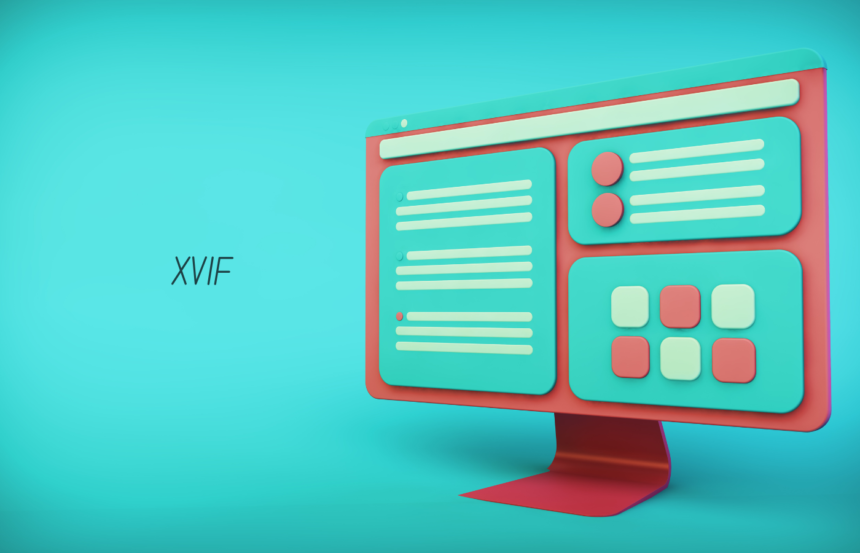Introduction
In the rapidly evolving digital landscape, new technologies and terms frequently emerge, often promising to revolutionize the way we interact with our devices and data. One such term that has been gaining attention recently is XVIF. But what exactly is XVIF, and why should you care about it? This comprehensive guide aims to unpack everything you need to know about XVIF, including its definition, applications, benefits, and potential impact on the future.
Understanding XVIF
What is XVIF?
XVIF stands for “eXtended Visual Interface Framework,” a cuttingedge technology designed to enhance visual interactions across various digital platforms. It integrates advanced graphical interfaces with intuitive user experience design, providing a seamless and immersive interaction for users.
History of XVIF
Origins and Development
The concept of XVIF originated from the need to bridge the gap between traditional graphical user interfaces and more immersive, interactive environments. Developed by a team of visionary engineers and designers, XVIF aims to push the boundaries of visual technology and create a more engaging user experience.
Key Components of XVIF
Core Elements
- Advanced Graphics Engine: At the heart of XVIF is a powerful graphics engine that supports highdefinition visuals and complex animations.
- User Experience Design: XVIF places a strong emphasis on usercentric design, ensuring that interfaces are not only visually appealing but also easy to navigate.
- CrossPlatform Compatibility: One of XVIF‘s standout features is its ability to work seamlessly across different devices and operating systems.
Applications of XVIF
Where is XVIF Used?
Gaming: XVIF is revolutionizing the gaming industry by providing more realistic graphics and immersive gameplay experiences.
- Virtual Reality: In VR environments, XVIF enhances the realism and interactivity, making virtual worlds more lifelike.
- Web Design: Websites using XVIF can offer richer, more dynamic content, improving user engagement and satisfaction.
- Mobile Applications: XVIF helps mobile apps deliver superior graphics and intuitive interfaces, enhancing overall usability.
Benefits of XVIF
Why Choose XVIF?
- Enhanced Visuals: XVIF‘s advanced graphics capabilities lead to more stunning and realistic visuals.
- Improved User Experience: With its focus on usercentric design, XVIF makes digital interactions smoother and more enjoyable.
- Greater Engagement: By providing richer content and more interactive elements, XVIF helps increase user engagement and retention.
- Flexibility: XVIF‘s crossplatform compatibility ensures that users can enjoy a consistent experience, regardless of their device.
Implementing XVIF in Your Projects
Getting Started with XVIF
- Understand the Requirements: Before integrating XVIF, it’s essential to understand the specific needs and goals of your project.
- Choose the Right Tools: Utilize tools and frameworks that support XVIF for a smoother development process.
- Focus on Design: Pay close attention to user experience design to make the most out of XVIF‘s capabilities.
- Test Extensively: Ensure thorough testing across different devices and platforms to guarantee a seamless experience.
Challenges and Solutions
Overcoming Obstacles in XVIF Implementation
- Learning Curve: Like any new technology, XVIF comes with a learning curve. Invest in training and resources to get up to speed.
- Performance Issues: Highdefinition visuals and complex animations can strain system resources. Optimize your code and assets to mitigate performance issues.
- Compatibility: Ensure that XVIF components are compatible with the devices and platforms you’re targeting.
Future of XVIF
What’s Next for XVIF?
The future of XVIF looks promising, with ongoing advancements likely to expand its capabilities and applications. As more industries recognize the value of enhanced visual interfaces, XVIF is poised to become a standard in digital interaction design.
Case Studies
RealWorld Examples of XVIF in Action
- Gaming Industry: A leading game developer used XVIF to create a more immersive virtual world, resulting in increased player engagement and higher sales.
- Ecommerce: An online retailer implemented XVIF to enhance its website’s visual appeal, leading to improved user satisfaction and a significant boost in conversion rates.
- Education: An educational platform integrated XVIF into its elearning modules, providing students with more engaging and interactive content.
Conclusion
In conclusion, XVIF represents a significant leap forward in digital interaction technology. By offering enhanced visuals, improved user experience, and crossplatform compatibility, XVIF is set to revolutionize how we interact with digital content. Whether you’re in the gaming industry, web design, or any other field that relies on visual interfaces, XVIF offers a powerful tool to create more engaging and immersive experiences. As technology continues to evolve, embracing innovations like XVIF will be crucial for staying ahead of the curve and delivering exceptional user experiences.
FAQs
How does XVIF improve user experience?
XVIF improves user experience by integrating advanced graphics and intuitive design, making digital interactions more engaging and easier to navigate.
Is XVIF compatible with all devices?
Yes, one of the key strengths of XVIF is its crossplatform compatibility, allowing it to work seamlessly across different devices and operating systems.
What industries can benefit from XVIF?
Industries such as gaming, virtual reality, web design, mobile applications, and education can significantly benefit from the enhanced visuals and user experience provided by XVIF.
Are there any challenges associated with XVIF implementation?
Yes, challenges include a learning curve, potential performance issues, and ensuring compatibility across various devices and platforms. However, these can be mitigated with proper planning and optimization.
How can I start using XVIF in my projects?
To start using XVIF, understand your project’s requirements, choose the right tools, focus on usercentric design, and conduct extensive testing across different platforms.
What is the future of XVIF?
The future of XVIF is bright, with ongoing advancements expected to expand its capabilities and applications, making it a standard in digital interaction design.
